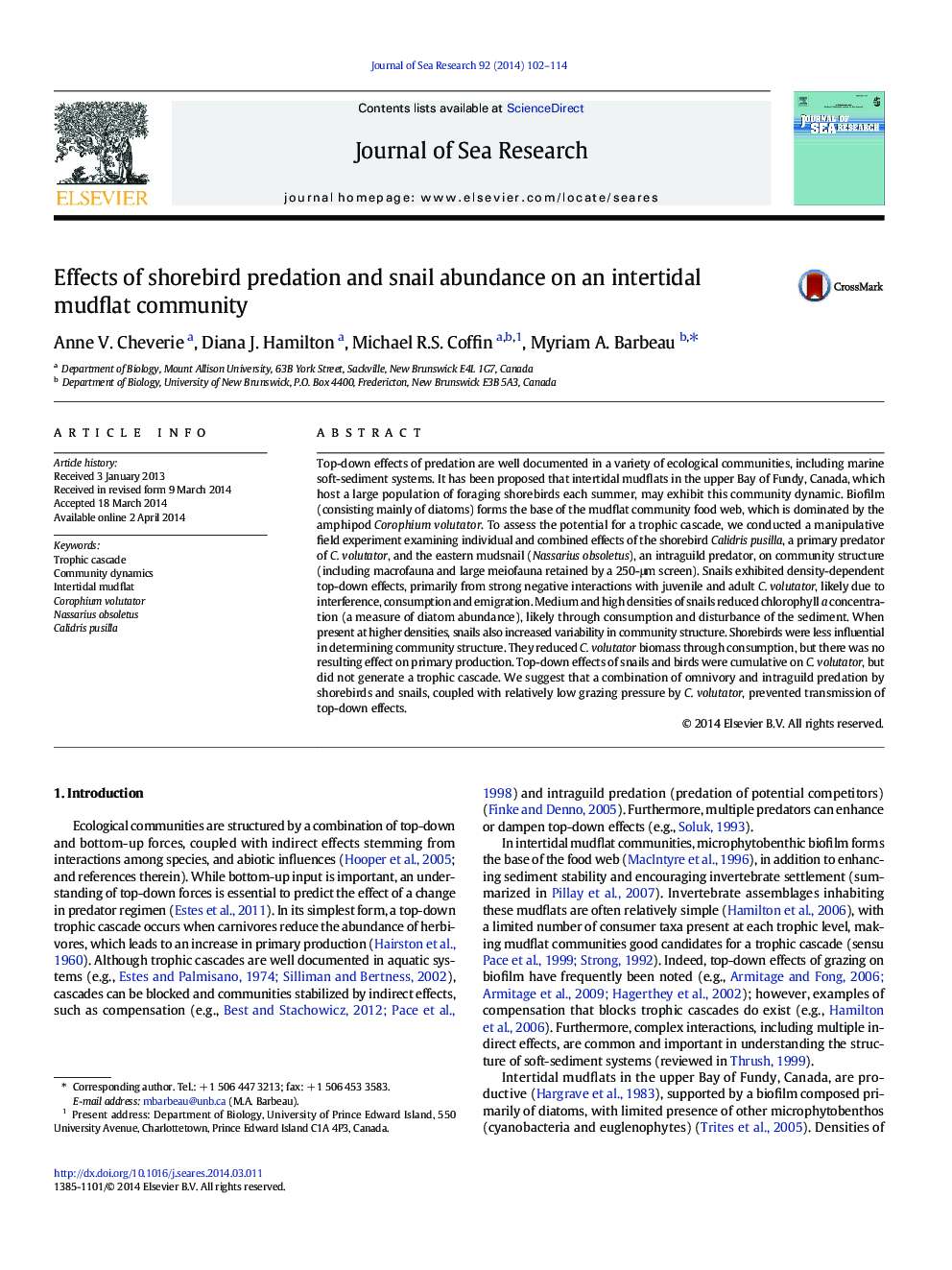| Article ID | Journal | Published Year | Pages | File Type |
|---|---|---|---|---|
| 6387319 | Journal of Sea Research | 2014 | 13 Pages |
â¢Shorebirds and mudsnails at low density have cumulative effects on mudflat infauna.â¢Mudsnails exhibit density-dependent effects on mudflat community structure.â¢Top-down effects do not generate a trophic cascade.â¢Increasing mudsnail density alters and may destabilize community structure.â¢Corophium volutator grazing has little effect on biofilm standing crop.
Top-down effects of predation are well documented in a variety of ecological communities, including marine soft-sediment systems. It has been proposed that intertidal mudflats in the upper Bay of Fundy, Canada, which host a large population of foraging shorebirds each summer, may exhibit this community dynamic. Biofilm (consisting mainly of diatoms) forms the base of the mudflat community food web, which is dominated by the amphipod Corophium volutator. To assess the potential for a trophic cascade, we conducted a manipulative field experiment examining individual and combined effects of the shorebird Calidris pusilla, a primary predator of C. volutator, and the eastern mudsnail (Nassarius obsoletus), an intraguild predator, on community structure (including macrofauna and large meiofauna retained by a 250-μm screen). Snails exhibited density-dependent top-down effects, primarily from strong negative interactions with juvenile and adult C. volutator, likely due to interference, consumption and emigration. Medium and high densities of snails reduced chlorophyll a concentration (a measure of diatom abundance), likely through consumption and disturbance of the sediment. When present at higher densities, snails also increased variability in community structure. Shorebirds were less influential in determining community structure. They reduced C. volutator biomass through consumption, but there was no resulting effect on primary production. Top-down effects of snails and birds were cumulative on C. volutator, but did not generate a trophic cascade. We suggest that a combination of omnivory and intraguild predation by shorebirds and snails, coupled with relatively low grazing pressure by C. volutator, prevented transmission of top-down effects.
